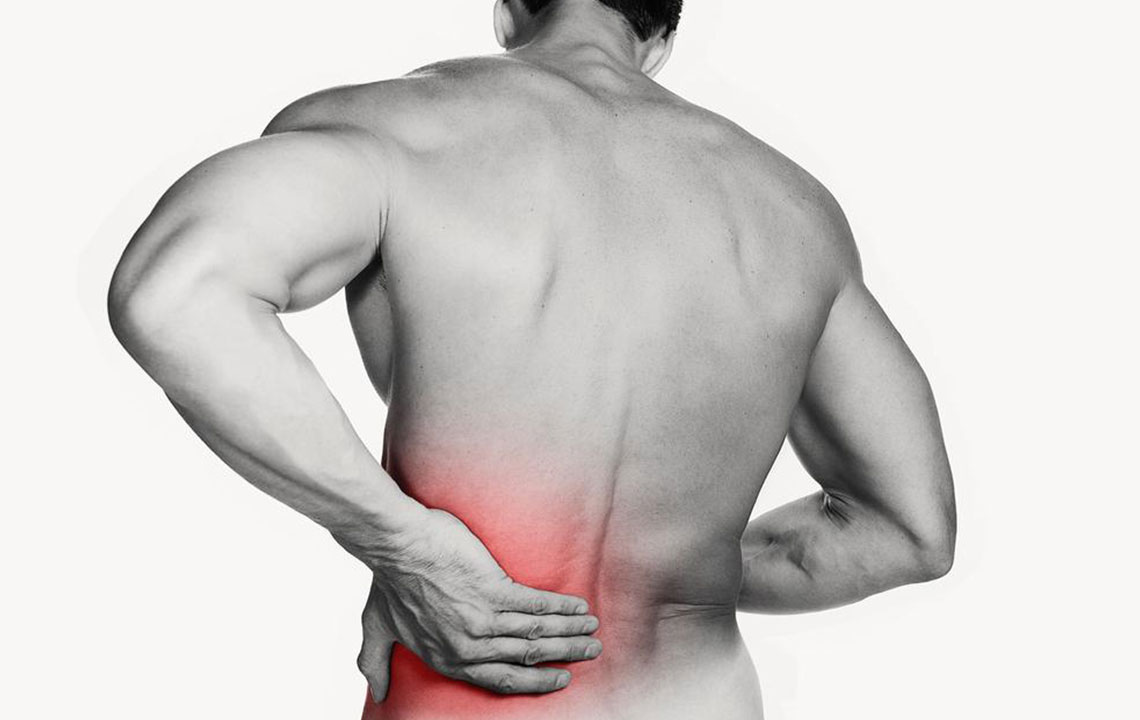Comprehensive Guide to Causes and Remedies for Upper Back and Shoulder Blade Discomfort
This comprehensive guide explores common causes of upper back and shoulder blade pain, emphasizing the importance of early diagnosis and effective treatment. It covers musculoskeletal issues, internal health conditions, preventive strategies, and lifestyle advice to promote a healthy back and shoulders. Whether dealing with minor strains or underlying health problems, understanding the causes and solutions can help individuals manage discomfort and prevent long-term issues, leading to improved mobility and quality of life.

Discomfort in the upper back and around the shoulder blades is a common concern that affects many individuals at various stages of life. Often perceived as dull throbbing, sharp pangs, or persistent soreness, this type of pain—known medically as interscapular pain—can significantly impact daily activities and quality of life. Although some episodes of discomfort may resolve on their own, persistent or worsening pain should never be dismissed. Addressing the root causes promptly with appropriate medical guidance is crucial for effective relief and preventing potential complications. This comprehensive guide explores the primary causes of upper back and shoulder blade pain, effective treatment options, preventive measures, and lifestyle adjustments to maintain a healthy back and shoulders.
Understanding the Anatomy of the Upper Back and Shoulder Blades
The upper back, also known as the thoracic spine, comprises twelve vertebrae that connect with the ribs, providing support for the upper body. The shoulder blades—also called scapulae—are flat, triangular bones that facilitate shoulder mobility and connect arm movements to the thoracic cage. Numerous muscles, tendons, nerves, and joints surround these structures, working together to enable a wide range of motion, stability, and strength. Due to this complex anatomy, discomfort in this area can originate from multiple sources, including musculoskeletal injuries, nerve impingement, or internal organ issues.
Primary Causes of Upper Back and Shoulder Blade Discomfort
Musculoskeletal Factors
One of the most prevalent causes of discomfort in the shoulder blades and upper back is musculoskeletal injury. These injuries often involve muscles, tendons, or ligaments and can result from various everyday activities or ergonomic issues.
Muscle or Tendon Strains: Overexertion, improper lifting, or sudden movements can overstretch or tear muscle fibers. Common triggers include:
Awkward sleeping positions that strain neck and back muscles
Lifting heavy objects without proper technique
Poor ergonomic setups in the workplace, especially when working at desks or computers
Prolonged periods of sitting, especially with slouched posture
Intense physical activities or sports involving repetitive arm movements or high impact
These strains often cause localized pain, stiffness, and reduced mobility, which may become chronic if not addressed appropriately.
Internal Medical Conditions
In some cases, shoulder blade discomfort is a symptom of underlying internal health issues that require prompt diagnosis and treatment.
Gallbladder Problems: Conditions like gallstones may cause referred pain to the upper right shoulder or back, sometimes accompanied by nausea and abdominal discomfort.
Nerve Impingement: Compression or irritation of nerves—particularly in the cervical or thoracic spine—can generate radiating pain, numbness, or tingling sensations in the shoulder blades.
Degenerative Spinal Conditions: Aging-related pathologies like herniated discs, osteoarthritis, or spinal stenosis can compromise nerve function and cause persistent pain.
Spinal Misalignments and Scoliosis: Abnormal curvatures or misalignments in the spine may lead to uneven pressure on nerves and muscles, resulting in discomfort.
Cancerous Growths: Tumors in the lungs, liver, esophagus, or lymphatic system can produce referred pain to the upper back and shoulder region. Early diagnosis is vital for effective treatment.
Reflux and Gastrointestinal Issues: Acid reflux or GERD sometimes radiates pain to the back and shoulders, especially after eating.
Other Conditions: Diseases such as fibromyalgia, osteoporosis, or spinal stenosis also contribute to chronic back and shoulder blade pain.
When to Seek Medical Assistance
Most episodes of back or shoulder blade pain are temporary and can be relieved through simple lifestyle changes and home remedies. However, persistent, severe, or worsening pain—including accompanying symptoms like numbness, weakness, difficulty breathing, or unexplained weight loss—should prompt immediate medical evaluation. A healthcare professional can perform diagnostic tests such as X-rays, MRIs, or nerve conduction studies to identify underlying causes and recommend appropriate treatment plans. Early intervention often results in better outcomes and prevents chronic conditions from developing.
Effective Treatment Strategies
Self-Care and Lifestyle Modifications
Many cases of upper back and shoulder pain respond well to basic self-care measures:
Rest and Activity Modification: Avoid activities that trigger pain and incorporate periods of rest to prevent aggravation.
Proper Posture: Maintaining ergonomic seating, using supportive chairs, and ensuring correct desk setups can reduce strain.
Stretching and Gentle Exercises: Regular stretching routines, yoga, and targeted exercises strengthen back muscles and improve flexibility.
Correct Sleeping Habits: Use supportive pillows and sleep on your back or side to minimize strain on shoulder and neck muscles.
Medical Treatments and Interventions
In cases where pain persists or is severe, medical treatments may be necessary:
Medications: Nonsteroidal anti-inflammatory drugs (NSAIDs) like ibuprofen, muscle relaxants, or prescribed analgesics can help manage pain and inflammation.
Physical Therapy: A licensed therapist can develop personalized exercise programs, manual therapy, and modalities such as ultrasound or electrical stimulation to alleviate discomfort.
Injections and Invasive Procedures: Corticosteroid injections may be used for severe inflammation or nerve impingement. In rare cases, surgical intervention might be necessary.
Alternative Therapies: Acupuncture, massage therapy, and chiropractic care have shown benefits in managing musculoskeletal pain and promoting recovery.
Preventive Measures for a Healthy Back and Shoulders
Prevention is always better than cure. Adopting healthy habits can significantly reduce the risk of developing chronic upper back or shoulder blade pain:
Ergonomic Work Environment: Ensure your workspace supports good posture—ergonomic chairs, adjustable desks, and monitor levels.
Keep Active: Engage in regular physical activity that strengthens core muscles, improves flexibility, and promotes circulation.
Practice Safe Lifting: Use proper lifting techniques, lift with your legs, and avoid twisting while lifting heavy objects.
Manage Stress: Stress can cause muscle tension; relaxation techniques like meditation and deep breathing help relax tense muscles.
Healthy Lifestyle Choices: Maintain a balanced diet, avoid smoking, and limit alcohol consumption to support overall musculoskeletal health.
Conclusion
Upper back and shoulder blade discomfort can stem from a variety of causes—ranging from minor muscular strains to serious internal health issues. Recognizing the symptoms early and adopting effective treatments can help restore comfort and prevent complications. Emphasizing proper posture, regular stretching, and healthy lifestyle choices play pivotal roles in maintaining back health. When symptoms persist or worsen, seeking professional medical evaluation is essential for accurate diagnosis and targeted intervention. Maintaining a proactive approach towards back wellness ensures a pain-free, active life and contributes to overall health and well-being.





